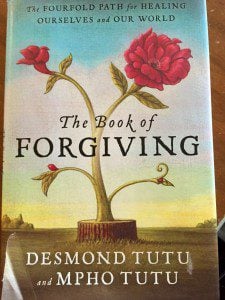An alternate title for this post could be ” What To Do If Someone Asks for Counseling and It’s Been a Long Time Since Your Last Pastoral Care Class: Or, How To Help If You’ve Never Had a Counseling Class.” Hint: the contemplative listening how-to guide that anyone can do is at the end if you want to skip to that part.
I received two interesting emails yesterday. One was a colleague asking for advice on how to respond to the increasing number of non-church members coming for counseling who both legitimately want counseling (and are not simply using this approach as a ruse for asking for financial assistance) and cannot afford even the lowest rate of the sliding scale at the nearby counseling center. My friend is a gifted pastor, but understandably feels somewhat ill equipped to offer more than one or two sessions of counseling before making a referral. Her two pastoral counseling classes in seminary were helpful, but not enough for long-term care.
The second email was from a former classmate who reminded me that this week is the fifth anniversary of our cohort entering the three-year Art of Spiritual Direction program at San Francisco Theological Seminary. The serendipitous confluence of these two emails inspired this post in which I would like to briefly share some insights that may be helpful to other people in similar situations. A few thoughts:
Consider Spiritual Direction training. This recommendation is obviously more long-term than short-term advice, but I’m not sure that I would still be in full-time ministry more than 8 years after my ordination if I had not both sought out a spiritual director immediately upon receiving a call to be a full-time member of a church staff and applied to the low-residency spiritual direction training program as continuing education after three-years of full-time ministry. I have found the paradigm of spiritual direction be incredibly life-giving. Particularly important to me is the emphasis on spiritual practices, discerning where God is already at work, and the sense that spiritual direction is the continuous work of growth and wisdom over the course of a lifetime, not just about learning to manage a particular crisis.
Seek out a Spiritual Director. As one of my mentors says, “You can’t give what you don’t have.” If you’re going to be a non-anxious presence for others and potentially be offering them any sort of spiritual direction, you need to be doing your own work as well. You also need a place to process what comes up within yourself mentally, physically, and emotionally when you are counseling others. At best, you would have a separate supervisor to discuss such matters. But start with a spiritual director. The Spiritual Directors International website is a tremendous resource for finding the spiritual director that is right for you at this particular place in your spiritual journey.
Practice Contemplative Listening. Of course one solution to the problem at hand could for my friend’s church to set up an relationship or expense account with the local counseling center to pay the lowest rate on the sliding scale for those who can’t afford even that. But perhaps there is a reason that these folks are coming to a local congregation for help, beyond the hope for free counseling: there is likely a spiritual component to their problem that may well not be fully addressed by a secular therapy — and most (though not all) Christian counseling centers are decidedly evangelical or fundamentalist in worldview.
There are, of course, many advanced techniques that trained spiritual directors and therapists can offer, but almost anyone — laity or clergy — can learn quite easily to offer others the basic gift of contemplative listening. There are few places in our modern world in which someone offers to compassionately listen to you for a full hour every month or so. The results can be life-changing.
Confidentiality on your part is essential. Nothing shared inside the room should ever be brought up by you unless the other person initiates — with the exception of someone threatening her or his own life or the life of another person.
The following process is adapted from a blend of basic approaches to both one-on-one spiritual direction and group spiritual direction. Without formal training, what you are offering another person is not officially therapy or spiritual direction, but the vital gift of spiritual friendship. This guide is not original to me. It is more or less what you learn on day one of spiritual direction training, and all of the advanced techniques build on the essential foundation of contemplative listening.
- Light a Candle – Ideally you want to be in a private place where you will not be interrupted. When you light the candle you can say something like, “We light this candle as a reminder that we are not alone in this room. God is present, and we will seek to discern God’s call together in this sacred time and place.”
- Start with Silence – Then say something along the lines of, “I would like to invite us to begin with some contemplative silence. If you are comfortable, close your eyes and take a few deep breaths. Allow yourself to let go, as much as possible, of any anxieties or worries. Be fully present with your whole self and all your senses to this present moment. In the silence I invite you to ask God what you should share first to begin our time together. Ask God, and then listen in silence. Allow yourself to be surprised by what floats to the surface of your mind as a good place to begin. When something emerges, speak out of the silence and I will be ready to listen.”
- Listen Compassionately with a Non-anxious Presence – You do not have to have all the answers, nor could you. One definition of contemplative listening is “listening another into speech.” By listening prayerfully and with all your senses, you are offering another person the time and space to process their inner and outer experience. Many people will never give themselves permission to take the luxury of an hour of self-reflection without this protected time and space of your meeting with them. Almost everyone will be shocked at the revelations they find themselves articulating. Most essentially you are helping give them a container in which these self-disclosures can emerge.
- Limit Your Responses. Contemplative listening is not a conversation, and it’s not about you. The hardest part of this process is for the listener to simply, deeply, and radically listen — bracketing and letting go of your own curiosity and desire to share your story. You are accompanying another on their spiritual journey. Four classic responses are the following:
- “When you said__________, I noticed_____________.”“
- When you said__________, I was struck by_________.”
- “When you said__________, I felt___________.”
- “When you said__________, I got an image of _______.”
It’s best to, for the most part, limit yourself to these simple, short responses. Remain aware of the speaker and how she or he may be deepening the story in his or her responses to what is shared. Remain aware also of your own inner experience as it relates to the speaker. Keep moving with the speaker, responding to what the speaker is communicating in the present in order to follow as the speaker’s developing story.
If you have a peer that might benefit from this process, you could meet once a month for two hours with one person listening first, then switching roles. Such a regular meeting could could give you the necessary practice to offer this skill to a stranger.
- Be Comfortable with Silence: If there is a natural pause in which which none of the above prompts seems appropriate, return to the first step and say something like, “I would like to invite us to return to the contemplative silence with which we began. I invite you again to close your eyes and take a few deep breaths. In the silence I invite you to again ask God what you should share next. Listening silently, and allow yourself to be surprised by what floats to the surface of your mind. It is also fine to simply rest in God’s presence for as long as the Spirit leads you to. If something emerges, speak out of the silence and I will be ready to listen.” As a way of becoming more comfortable with silence and resting in God’s presence, I highly recommend the book Centering Prayer and Inner Awakening by Cynthia Bourgeault.
- Limit Your Sessions to Fifty Minutes: This boundary helps protect your time as well as focus the time of the other person. After about forty minutes, you may want to say, “Our time is almost up for this session, is there anything you wanted to be sure to mention?” You’ll be surprised that often major relevations happen right at the end of the session. You can say something like, “That seems really important. Take some time to journal and reflect about it, and we can begin there next time if that feels right.” Use the final ten minutes of the hour the closing prayer and for scheduling the next meeting if desired.
- End in Prayer: If you are comfortable praying aloud, you can ask, “What would you like to me to pray for?” or “Would you like to close us in prayer or should I?” Alternately, you could offer some final noticings about any themes or patterns you have seen or perhaps end with a prayer from a written prayer from book such as To Bless the Space Between Us: A Book of Blessings by John O’Donohue.
- Meet Every 4-6 Weeks. If someone is in a deep crisis, you may need to meet regularly, or they make need more traditional therapy. Generally this process will be most effective when enough time has passed for there to be enough new experiences to be processed through the session.
For Further Study
- Daniel Wolpert, Creating a Life with God: The Call of Ancient Prayer Practices
- ________, Leading a Life with God: The Practice of Spiritual Leadership
- Timothy M. Gallagher, The Discernment of Spirits
- Dennis Linn, et al, Sleeping with Bread: Holding What Gives You Life
- Debra K. Farrington, Hearing with the Heart: A Gentle Guide to Discerning God’s Will for Your Life
- Elizabeth Liebert, The Way of Discernment: Spiritual Practices for Decision Making
- Jeremy Taylor, The Wisdom of Your Dreams: Using Dreams to Tap into Your Unconscious and Transform Your Life
- Carl McColman, The Big Book of Christian Mysticism: The Essential Guide to Contemplative Spirituality
- Susan Phillips, Candlelight: Illuminating the Art of Spiritual Direction
- Eugene H. Peterson, The Contemplative Pastor: Returning to the Art of Spiritual Direction
- Duane R. Bidwell, Short Term Spiritual Guidance
- Carl Rogers, On Becoming a Person
What other resources, techniques, or approaches would you recommend? I welcome your feedback in the comments section.
The Rev. Carl Gregg is a trained spiritual director, a D.Min. candidate at San Francisco Theological Seminary, and the pastor of Broadview Church in Chesapeake Beach, Maryland. Follow him on Facebook (facebook.com/carlgregg) and Twitter (@carlgregg).












